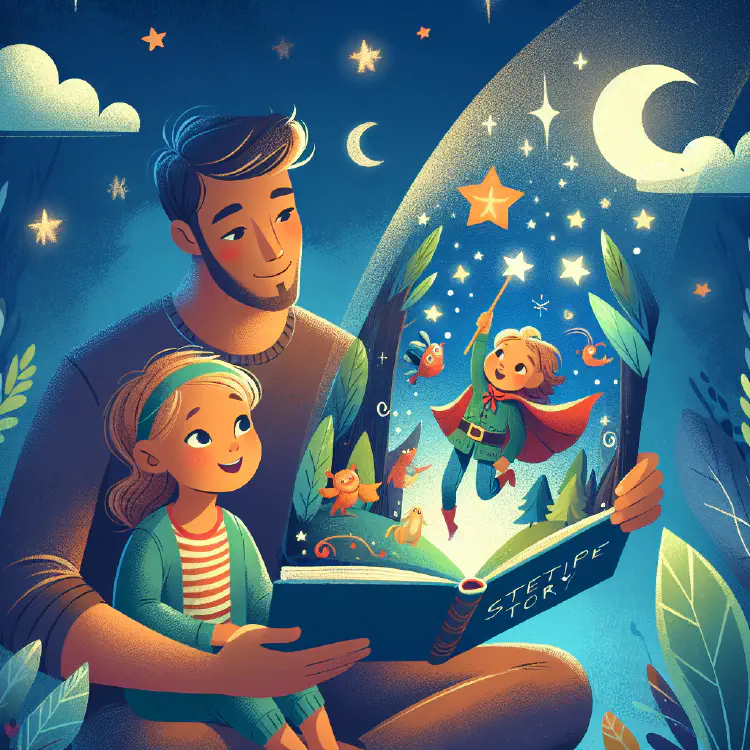How to Write a Personalized Bedtime Story for Your Child
Personalized bedtime stories strengthen parent-child bonds, boost self-esteem, address fears, encourage creativity, and create lasting memories. Craft stories with familiar elements and your child as the star.
- 4 min read

As parents, we all know the importance of bedtime stories for our little ones. They not only help create a soothing bedtime routine but also foster a love for reading and spark imagination. While there are countless wonderful books available, there’s something truly special about crafting a personalized bedtime story for your child. In this blog post, we’ll explore the art of creating custom bedtime stories that will captivate your child’s imagination and make bedtime a magical experience.
Why Personalized Bedtime Stories Matter
Before we dive into the how-to, let’s consider why personalized bedtime stories are so valuable:
Strengthens the parent-child bond: Creating and sharing a story tailored specifically for your child is an intimate experience that deepens your connection.
Boosts self-esteem: When children hear stories featuring themselves as the main character, it can boost their confidence and self-worth.
Addresses specific needs or fears: Personalized stories can help children cope with particular challenges or anxieties they may be facing.
Encourages creativity: As you craft these stories together, you’re modeling creative thinking for your child.
Creates lasting memories: These special stories become cherished memories that your child will carry with them for years to come.
Now that we understand the importance of personalized bedtime stories, let’s explore how to create them.
Step 1: Choose Your Story’s Theme
The first step in crafting a personalized bedtime story is deciding on a theme. This could be based on your child’s current interests, a recent experience, or a lesson you’d like to impart. Some ideas include:
- An adventure in a magical forest
- A day at a fantastical school
- A journey to outer space
- A underwater exploration
- A time-traveling escapade
Remember, the theme should be engaging for your child and appropriate for bedtime. While exciting adventures are great, avoid themes that might be too stimulating or scary for bedtime stories.
Step 2: Incorporate Your Child as the Main Character
The key to a truly personalized bedtime story is making your child the star. Use their name and include details about their appearance, personality traits, and likes or dislikes. This immediately draws them into the story and makes it more meaningful.
For example: “Once upon a time, there was a brave little girl named Sarah. She had curly brown hair, sparkling green eyes, and loved to wear her favorite purple sneakers everywhere she went.”
Step 3: Add Familiar Elements
To make the story even more personal, include elements from your child’s daily life. This could be:
- Their favorite toys or stuffed animals
- Pets or family members
- Their bedroom or other familiar locations
- Activities they enjoy
By weaving these familiar elements into the story, you create a comforting blend of the real and imaginary worlds.
Step 4: Develop a Simple Plot
For bedtime stories, especially for toddlers and preschoolers, it’s best to keep the plot simple and easy to follow. A basic story structure includes:
- Introduction: Set the scene and introduce the main character (your child).
- Problem or challenge: Present a situation that needs to be resolved.
- Journey or attempt to solve the problem: This is where the bulk of the adventure happens.
- Resolution: Wrap up the story with a satisfying conclusion.
For example, in a story about a child who helps lost animals find their way home, the structure might look like this:
- Introduction: Sarah loves animals and often visits the local park.
- Problem: One day, she notices that many animals in the park seem lost and confused.
- Journey: Sarah goes on a quest to help each animal find its home, using her knowledge and kind heart.
- Resolution: All the animals are safely back home, and Sarah feels proud of her accomplishment.
Step 5: Include Interactive Elements
To make your bedtime stories even more engaging, consider adding interactive elements. This could involve:
- Asking your child to make choices for the main character
- Encouraging them to make sound effects or gestures at certain points in the story
- Pausing to ask what they think might happen next
These interactive elements not only make the story more fun but also help develop your child’s critical thinking and creativity.
Step 6: Add a Positive Message or Lesson
While not every bedtime story needs to have a moral, it can be beneficial to include positive messages or gentle lessons.
